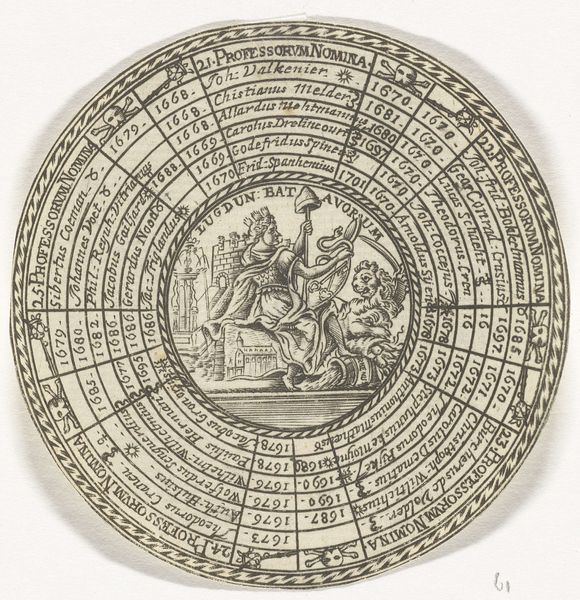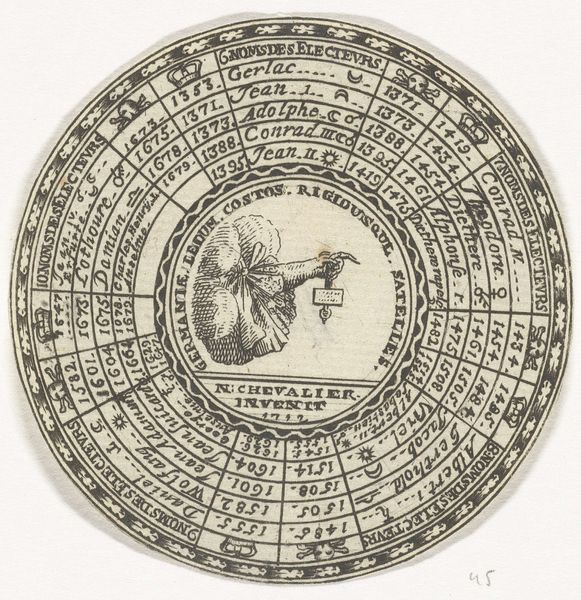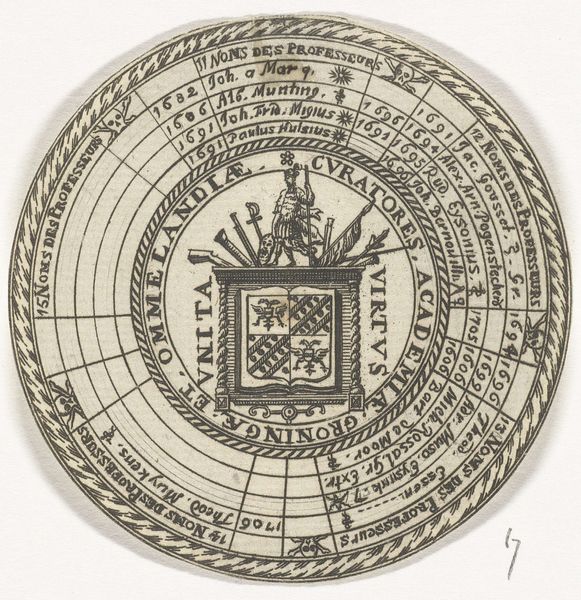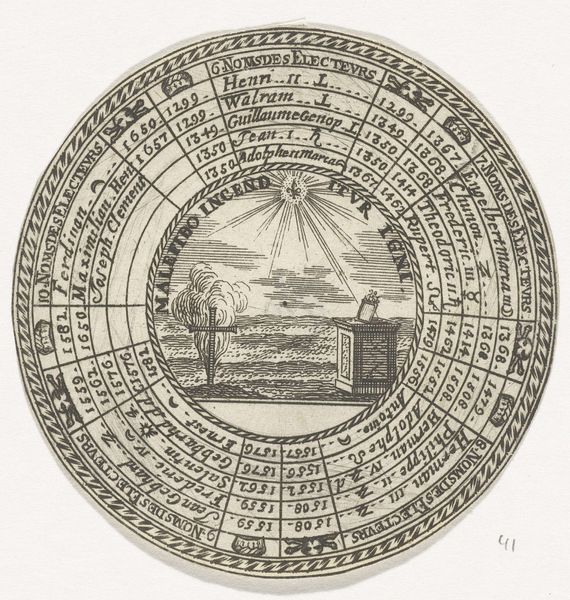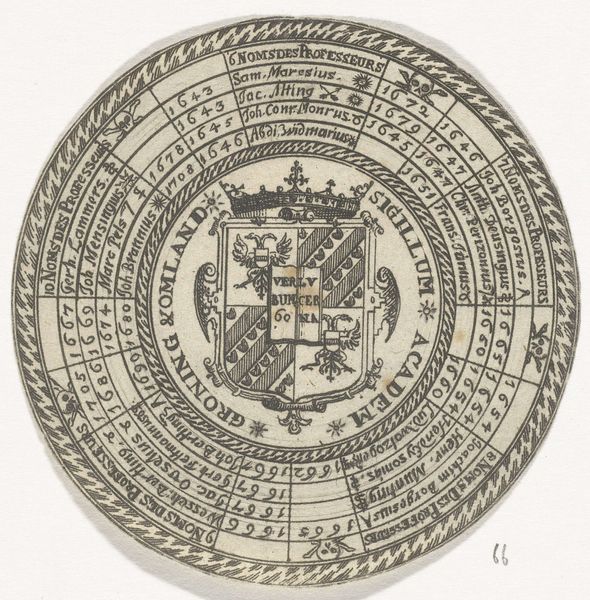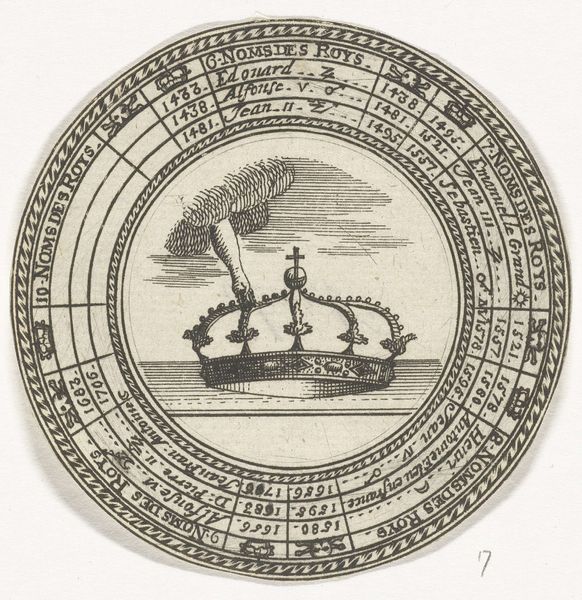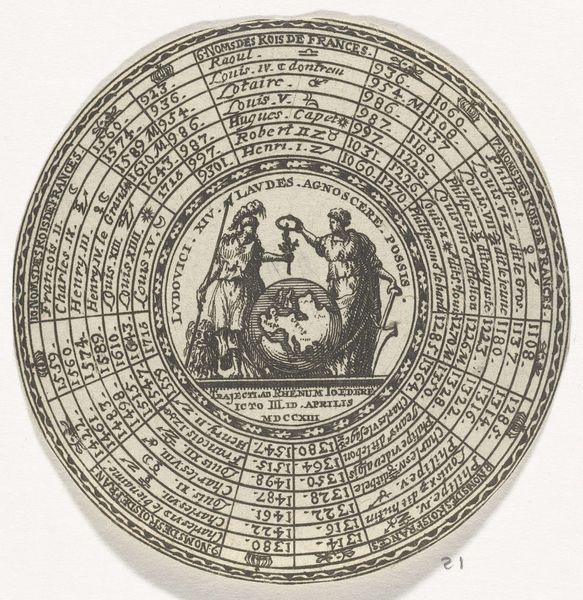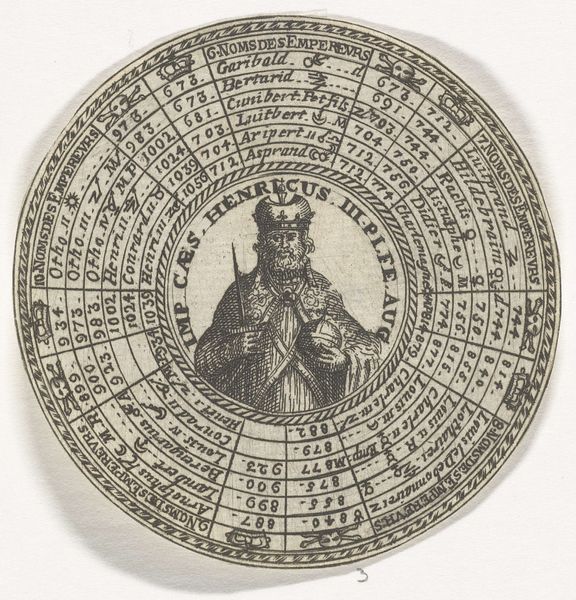
graphic-art, print, engraving
#
graphic-art
#
medieval
# print
#
old engraving style
#
crosshatching
#
pen-ink sketch
#
15_18th-century
#
intricate pattern
#
pen work
#
history-painting
#
engraving
#
intricate and detailed
Copyright: Rijks Museum: Open Domain
Curator: We're looking at a print titled "Penning met een embleem en de namen van Spaanse koningen," dating back to 1713, made by an anonymous artist. It's a rather intriguing engraving, isn't it? Editor: Intricate! Like looking into a labyrinth. It feels incredibly dense, almost claustrophobic, yet there’s a strange allure in trying to decipher it all. I’m immediately drawn to the central image with those figures...very austere. Curator: Yes, the central emblem anchors the whole piece. Encircling it are layers upon layers of names and dates related to Spanish kings. This style really typifies historical record-keeping using graphic arts from the period. The symbolic weight feels very deliberate, embedding figures into the framework of lineages. Editor: Absolutely. There's an almost obsessive quality to how everything is arranged—the neat lists, the circular layout mimicking a coin. What’s striking is how this level of detail transforms mere record-keeping into an artifact buzzing with cultural memory. It’s not just information, but a kind of tangible history lesson. Curator: The technique, too, enhances that feeling. The crosshatching creates a texture that gives it this almost archaic presence. That dense line work really suggests the passage of time and layered history, literally carved into the page. This meticulous approach definitely suggests not only informational intent but the memorialization of authority and legacy through careful detail. Editor: Right. There's this implied power in knowing all the kings’ names in perfect order, perfectly etched into this organized form. Thinking of it circulated in its day… I wonder if this served a specific educational purpose. Did they memorize this stuff like times tables? Curator: More likely a commemorative function, something more ceremonial than an educational chart. That central scene probably depicts a historical moment— the engraving beneath translates to "The Peace of Utrecht," the 1713 treaty designed to end the War of the Spanish Succession, perhaps marking an idealized consolidation of Spanish Royalty. Editor: A kind of propaganda then, a perfectly organized historical symbol of a powerful continuity? Well, looking at the chaos around us now, something about the old commitment to structured legacies is rather appealing. Curator: Indeed, in an age of digital ephemerality, there is a power and presence conveyed through the sustained craft required to produce this circular chart, where everything is embedded and interwoven into historical legacies. Editor: I appreciate the chance to peer back into the 18th century today. It is humbling and humanizing to remember how societies throughout time wrestle with ordering time.
Comments
No comments
Be the first to comment and join the conversation on the ultimate creative platform.
